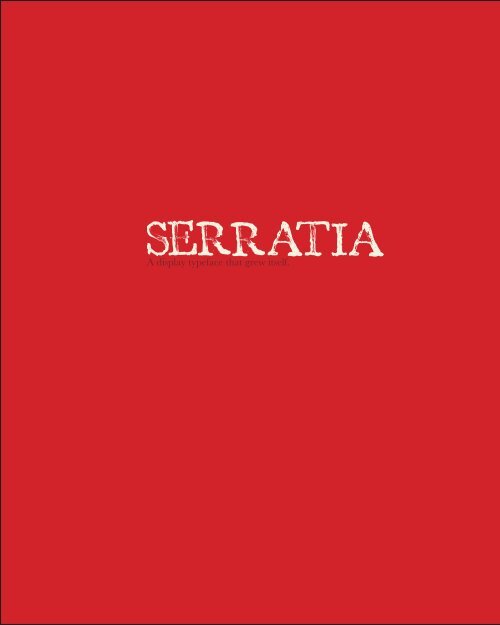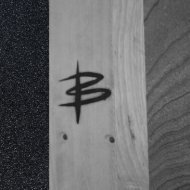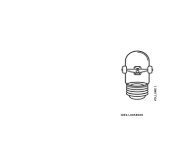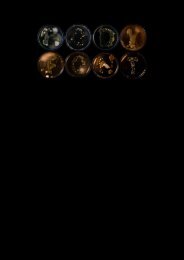serratia marcences type spec
Create successful ePaper yourself
Turn your PDF publications into a flip-book with our unique Google optimized e-Paper software.
A display <strong>type</strong>face that grew itself.
(<strong>type</strong>-founder)<br />
Joseph Fry (1728 – 27 March 1787),<br />
was an English <strong>type</strong>-founder and<br />
chocolate maker and founder of the<br />
Bristol branch of the Quaker Fry<br />
family.<br />
He was the eldest son of John Fry<br />
(d. 1775) of Sutton Benger, Wiltshire,<br />
author of ‘Select Poems,’<br />
1774, 4th edition, 1793.<br />
He was educated in the north of<br />
England, and afterwards bound<br />
apprentice to Henry Portsmouth of<br />
Basingstoke, an eminent<br />
doctor, whose eldest daughter,<br />
Anna, he afterwards married.<br />
He was the first member of his<br />
family to settle in Bristol, where he<br />
acquired a considerable<br />
medical practice, and ‘was led to<br />
take a part in many new<br />
scientific undertakings’.<br />
PAGE<br />
2
The success of John Baskerville<br />
caused Fry to turn his attention<br />
in 1764 to <strong>type</strong>-founding, and he<br />
entered into a partnership with<br />
William Pine, the first printer of<br />
the newspaper Bristol Gazette, who<br />
had a large business in Wine Street.<br />
Their new <strong>type</strong> may be traced in<br />
several works issued between 1764<br />
and 1770. The manager of Messrs.<br />
Joseph Fry & Wm Pine was Isaac<br />
Moore, formerly a whitesmith at<br />
Birmingham, after whose speedy<br />
admission to partnership the<br />
business (Bristol Letter Foundry of<br />
1764–1773) moved and went to<br />
London. He carried on as “Isaac<br />
Moore & Co., in Queen Street, near<br />
Upper Moorfields”. Philip Luckombe<br />
mentions Moore as one of<br />
three London founders. In 1774 the<br />
London firm produced a fine<br />
folio bible, and in 1774–1776 a<br />
well-printed edition in 5 vols. Fry’s<br />
first founts were cut in imitation<br />
Baskerville’s, the punches being<br />
engraved by Isaac Moore. About<br />
this time they somewhat abandoned<br />
their earlier Baskerville style of<br />
letter, to follow the more popular<br />
Caslon character.<br />
Joseph Fry’s firm became Joseph Fry<br />
of London (1773–1776).<br />
In 1774 Pine printed at Bristol a<br />
bible in a pearl <strong>type</strong>, asserted to be<br />
‘the smallest a bible was ever printed<br />
with.’ To all these editions notes<br />
were added to escape the penalty of<br />
infringing the patent.<br />
Fry took two of his sons, Edmund<br />
(d. 1835) and Henry, into<br />
partnership in 1782, and bought the<br />
sale of James Foundry on the death<br />
of Rowe Mores. The business was<br />
removed to Worship Street, where<br />
in 1785 was issued ‘A Specimen<br />
of Printing Types made by Joseph<br />
Fry & Sons, Letter-founders and<br />
Marking Instrument Makers by the<br />
King’s Royal Letters Patent.’ In the<br />
advertisement the proprietors<br />
‘flatter themselves’ that the <strong>type</strong>s<br />
which are called new ‘will mix with,<br />
and be totally unknown from, the<br />
most approved founts made by<br />
the late ingenious artist, William<br />
Caslon.’ The next year they<br />
published another ‘Specimen,’ with<br />
new founts, and including seven<br />
pages of oriental <strong>type</strong>s. They now<br />
called themselves ‘Letter-founders<br />
to the Prince of Wales.’<br />
PAGE<br />
3
Fry died after a few days’ illness caused by an infected wound on 29<br />
March 1787, aged 59, having father and grandfather he was a member of<br />
the Society of Friends, and was buried in the burial-ground at the Friars,<br />
Bristol.<br />
PAGE<br />
4
Serratia marcescens is a <strong>spec</strong>ies of<br />
rod-shaped gram-negative bacteria<br />
in the family Enterobacteriaceae.<br />
A human pathogen, S. marcescens<br />
is involved in hospital-acquired<br />
infections, particularly catheter-associated<br />
bacteremia, urinary tract<br />
infections and wound infections,<br />
and is responsible for 1.4% of HAI<br />
cases in the United States. It is<br />
commonly found in the<br />
respiratory and urinary tracts<br />
of hospitalized adults and in the<br />
gastrointestinal system of children.<br />
Due to its abundant presence in<br />
the environment, and its preference<br />
for damp conditions, S. marcescens<br />
is commonly found growing in<br />
bathrooms (e<strong>spec</strong>ially on tile grout,<br />
shower corners, toilet water line,<br />
and basin), where it manifests as a<br />
pink, pink-orange, or orange discoloration<br />
and slimy film feeding off<br />
phosphorus-containing materials or<br />
fatty substances such as soap and<br />
shampoo residue.<br />
In humans, S. marcescens can<br />
cause infection in several sites,<br />
including the urinary tract,<br />
respiratory tract, wounds, and the<br />
eye, where it may cause<br />
conjunctivitis, endophthalmitis, and<br />
tear duct infections.<br />
It is also a rare cause of<br />
endocarditis and osteomyelitis<br />
(particularly in people who use<br />
intravenous drugs recreationally),<br />
pneumonia, and meningitis.<br />
Most S. marcescens strains are<br />
resistant to several antibiotics<br />
because of the presence of<br />
R-factors, which are a <strong>type</strong> of<br />
plasmid that carry one or more<br />
genes that encode resistance; all<br />
are considered intrinsically resistant<br />
to ampicillin, macrolides, and<br />
first-generation cephalosporins<br />
(such as cephalexin).<br />
Some pathogenic microorganisms<br />
when propagated in culture<br />
medium give distinctive colors of<br />
their colonies. Such pigmentation<br />
comes in a variety of hues, and<br />
often provides important diagnostic<br />
clues in laboratories for the<br />
identification of the isolates. These<br />
microbial pigments also play a role<br />
in disease pathogenesis by<br />
interfering with host immune<br />
clearance mechanisms or by<br />
exhibiting pro-inflammatory or<br />
cytotoxic properties.<br />
PAGE<br />
5
PAGE<br />
6<br />
These letters were grown in the microbiology<br />
labs at the University of<br />
the West of England over a period<br />
of 8 weeks. The bacteria Serratia<br />
Marcencens as you can see produce<br />
a bright red pigment.<br />
The inspiration for this <strong>type</strong>face<br />
came from living in a student<br />
house with five male housemates.<br />
I witnessed first hand how mould<br />
grew in cups of tea and how it<br />
could be manipulated by putting<br />
different items inside of the cup.<br />
This whole project would not have<br />
happened if not by chance after a<br />
street party my friend came back<br />
with star shaped glitter covering his<br />
forehead. During the evening most<br />
of these stars detached themselves<br />
from his pva glued covered face<br />
and scattered themselves around<br />
our house.<br />
Several days later I noticed that<br />
one of these stars had landed in<br />
a tea cup left to go mouldy by the<br />
laziness of the collective of 5 lads<br />
happy to live in filth.<br />
The bacteria in the milky tea<br />
were producing a pale blue sporus<br />
texture typical of yeast bacteria<br />
replication. The skin flora from<br />
my friends face on the star had<br />
changed to a lighter yellow and<br />
the mouldy coloured star was very<br />
distinctively outlined within the tea<br />
cup.<br />
Bacteria could be controlled and<br />
manipulated into shapes so why not<br />
<strong>type</strong>? Over the next few weeks I<br />
tried to replicate to the process<br />
using laser engraved petri dishes<br />
with the engraving filled with milk<br />
to try to control the shapes the<br />
mould would grow but with little<br />
success.<br />
After a consultation with the Staff<br />
at the University of the West of<br />
Englands microbiology labs we<br />
initially tried to grow the first letters<br />
using a bacteria called Proteus<br />
mirabilis. It is a Gram-negative,<br />
facultatively anaerobic, rod-shaped<br />
bacterium.
It shows swarming motility and<br />
urease activity. P. mirabilis causes<br />
90% of all Proteus infections in<br />
humans. It is widely distributed in<br />
soil and water. Its swarming motility<br />
is the effect I thought might work<br />
initially. As my hope would be that<br />
the letters would grow from a light<br />
font through to a regular as the<br />
bacteria multiplied and then into a<br />
bolder version as the<br />
bacteria matured and consumed all<br />
of the nutrients in the Agar. Proteus<br />
Mirabilis sadly produces is a very<br />
light yellow almost cream like<br />
pigment and didn’t show up enough<br />
when photographed. We changed<br />
the agar to try to manipulate the<br />
Proteus Mirabilis to turn black<br />
but sadly this affected its ability to<br />
swarm.<br />
I swapped to Serratia Marcencens<br />
after researching famous <strong>type</strong>faces<br />
and typographers related to Bristol.<br />
I found that Joseph Fry partnership<br />
the business Bristol Letter Foundry of<br />
1764–1773 and brought the Baskerville<br />
<strong>type</strong>face to the United Kingdom<br />
to use on his printing presses. He<br />
never managed to finish re setting the<br />
<strong>type</strong>face for his printers before dieing<br />
from a infected wound on the 29th<br />
March 1787, aged 59.<br />
.Serratia Marcencens is the bacteria<br />
previous mentioned that causes<br />
wounds to become infected. Hospital<br />
acquired infections back in the 1700s<br />
were a very common cause of death.<br />
PAGE<br />
7
PAGE<br />
x25pt x50pt x100pt<br />
8
x25pt x50pt x100pt<br />
PAGE<br />
9
PAGE<br />
x25pt x50pt x100pt<br />
10
x25pt x50pt x100pt<br />
PAGE<br />
11
PAGE<br />
x25pt x50pt x100pt<br />
12
x25pt x50pt x100pt<br />
PAGE<br />
13
PAGE<br />
x25pt x50pt x100pt<br />
14
x25pt x50pt x100pt<br />
PAGE<br />
15
PAGE<br />
16
PAGE<br />
x25pt x50pt x100pt<br />
18
x25pt x50pt x100pt<br />
PAGE<br />
19
PAGE<br />
x25pt x50pt x100pt<br />
20
x25pt x50pt x100pt<br />
PAGE<br />
21
PAGE<br />
x25pt x50pt x100pt<br />
22
x25pt x50pt x100pt<br />
PAGE<br />
23
PAGE<br />
24
x25pt x50pt x100pt<br />
PAGE<br />
25
PAGE<br />
x25pt x50pt x100pt<br />
26
x25pt x50pt x100pt<br />
PAGE<br />
27
PAGE<br />
x25pt x50pt x100pt<br />
28
x25pt x50pt x100pt<br />
PAGE<br />
29
PAGE<br />
x25pt x50pt x100pt<br />
30
x25pt x50pt x100pt<br />
PAGE<br />
31
PAGE<br />
x25pt x50pt x100pt<br />
32
x25pt x50pt x100pt<br />
PAGE<br />
33
PAGE<br />
x25pt x50pt x100pt<br />
34
x25pt x50pt x100pt<br />
PAGE<br />
35
PAGE<br />
x25pt x50pt x100pt<br />
36
PAGE<br />
37
PAGE<br />
38
PAGE<br />
39
PAGE<br />
40<br />
x25pt x50pt x100pt
x25pt x50pt x100pt<br />
PAGE<br />
41
PAGE<br />
42<br />
x25pt x50pt x100pt
x25pt x50pt x100pt<br />
PAGE<br />
43
PAGE<br />
44<br />
x25pt x50pt x100pt
x25pt x50pt x100pt
PAGE<br />
46<br />
x25pt x50pt x100pt
x25pt x50pt x100pt<br />
PAGE<br />
47
PAGE<br />
48<br />
x25pt x50pt x100pt
x25pt x50pt x100pt<br />
PAGE<br />
49
PAGE<br />
50<br />
x25pt x50pt x100pt
x25pt x50pt x100pt<br />
PAGE<br />
51
PAGE<br />
52<br />
x25pt x50pt x100pt
x25pt x50pt x100pt
PAGE<br />
54<br />
x25pt x50pt x100pt
Special thanks to the university of the west of<br />
englands microbiology staff. Without your help<br />
and guidance this project would never have<br />
grown into itself.<br />
By Arthur Perry Third year graphic design at<br />
the university of the west of england.<br />
scan the code to find the downloadable version<br />
of the font.<br />
19/04/2016<br />
www.grizlypears.com<br />
PAGE<br />
55
PAGE<br />
56







